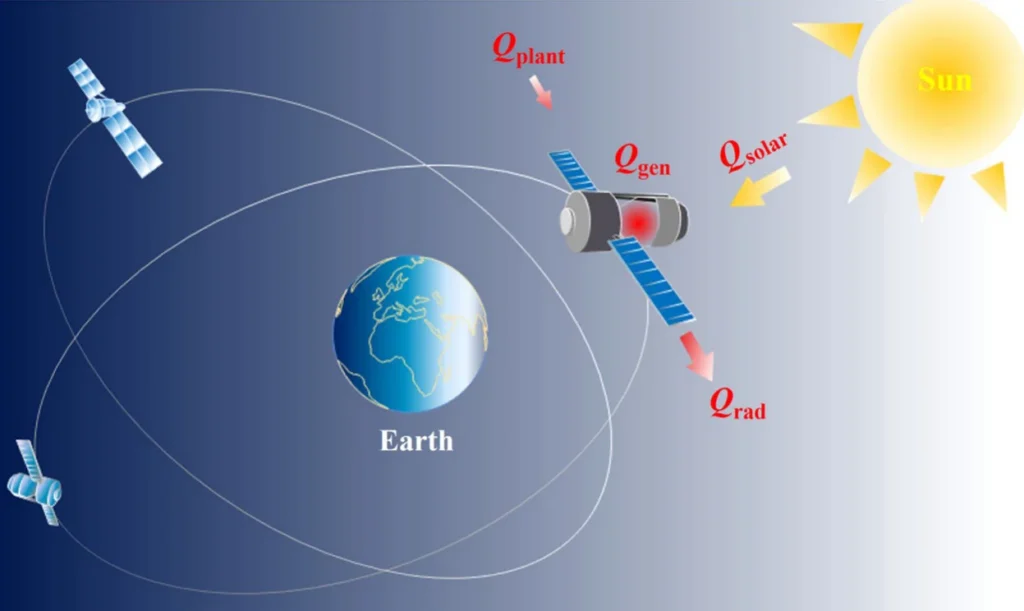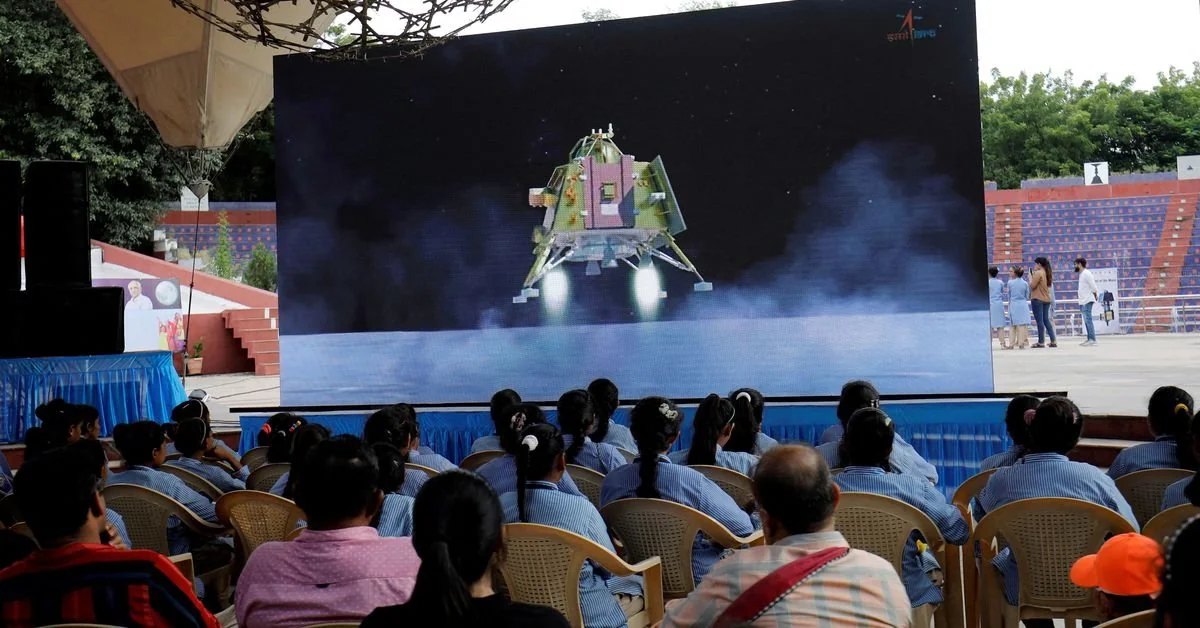Advances in Thermal Management Technologies for Spacecraft Electronics: Assuring Better Reliability and Performance
Space exploration is one field that requires the continuous updating of thermal management technologies in efforts to mitigate some of the rough conditions found outside the atmosphere of Earth. In this respect, spacecraft electronics are always under formidable challenges, including microgravity, thermal cyclings, and intense space radiation, which might impair the functionality and lifetime of equipment in case of inefficient management. Traditional methods turn out to be inefficient in such extreme environments; therefore, advanced TMT technologies are being continuously researched to ensure the stability and effectiveness of space missions.

In a review dated March 28, 2024, published in the journal “Energy Storage and Saving”, researchers from Xi’an Jiaotong University and the Xi’an Institute of Space Radio Technology provide an overview of such TMTs specially applied in spacecraft electronics. This review sorts through these technologies based on their roles in heat acquisition, transport, or rejection.
Detailed Discussion of Advanced TMTs
It identifies a number of new methods of thermal management in space. One is the development of high-thermal-conductivity materials, carbon-based composites, and annealed pyrolytic graphite. These will be very key to ensuring that heat is transferred quickly and safely away from sensitive electronics, eliminating overheating that ensures operational reliability.
Also Read: Stanford Engineers Realize Compact Titanium-Sapphire Laser for Portable Use
The review also underscores the rise of new packaging structures that take advantage of micro-/nano-electromechanical systems technologies. The microsystems allow great control over thermal dynamics at the microscale, facilitating enhanced heat dissipation and temperature regulation characteristics within spacecraft.
Advances in Heat Transport Solutions
A number of efficient heat transport mechanisms are required to keep the spacecraft at their preferred temperatures for optimum operation. Review of different types of heat-pipe technology is presented, ranging from the unseparated to the separated types, based on changes related to structural design and operation. Heat pipes efficiently transfer heat over long distances in a spacecraft and prevent large thermal gradients that may affect electronic performance.
The other significant technology in heating transport is the mechanically pumped fluid loop. Mechanical pumps are used in this process, which expose coolant fluids comprehensively through the induced channels to control temperatures over different spacecraft components. Advanced microfluidic cooling techniques complement such efforts by having very fine and efficient heat dissipation in cramped spaces, hence ensuring that electronics remain within safe temperature limits.
Addressing Heat Rejection Challenges
This makes heat dissipation techniques from spacecraft electronic equipment of very high priority if the mission is to be successful. In this review, some state-of-the-art solutions developed to manage heat rejection in the vacuum of space are explored. Deployable radiators, for example, provide adjustable surface areas that maximize heat emission in response to fluctuating thermal conditions. On the other hand, variable emissivity radiators do this through innovative materials and designs that adaptively control the amount of heat radiated into space to maintain thermal equilibrium on board the spacecraft.
Another frontier in heat rejection technology concerns phase change materials. The materials experience changes in phase reversibly with temperature; therefore, the changes from solid to liquid and vice-versa store thermal energy while the phase is changing, releasing it when required. By integrating PCMs into spacecraft thermal management systems, this allows for temperature control at high precision and the achievement of energy efficiency over long missions.
Implications for Future Space Missions
The various advances described in this review are with important implications for meeting the current and future space industry goals of increasing capabilities related to satellite technology and deep space exploration. By the development of more efficient and reliable TMTs, engineers want to extend the lifetime of spacecraft electronics and their performance while operating under extreme operating conditions. Lightweight materials, together with streamlined TCSs, not only help minimize mission costs but also create the way for miniaturized and high-power space systems that impact future exploration tasks.
For this reason, corresponding author Dr. Wen-Xiao Chu believed that these technologies have the potential to be transformative: “Our review underscores the critical role of advanced thermal management technologies in ensuring the success of forthcoming space missions. In such lines of innovation, future directions will open up new avenues to make unprecedented improvements in space explorers and satellite technologies through effectively mitigating the unique thermal challenges encountered in space.”
Conclusion
As humanity further expands into space, the need for reliable thermal management technologies can barely be overemphasized. It is through continuous evolution that TMTs will make a change in spacecraft design traditions by enabling operations to become both trustworthy and resilient to extreme thermal conditions. It is through the embedding of the latest engineered materials, advanced heat transportation structures, and adaptive heat rejection mechanisms that engineers can push the bounds of space exploration further than ever before. Further research in this field must, therefore, be continued if the potential that lies before future space missions is to be completely unlocked so that spacecraft electronics remain resilient, efficient, and capable of continuing to push the boundaries that exist in making scientific discoveries.
Trends and Future Directions
Efforts for further research are currently being channeled into further stretching thermal management technology. One of the most challenging areas of research areas is the integration of artificial intelligence and machine learning algorithms into spacecraft thermal control systems. This can enable AI-driven systems to analyze data, in near real-time, with algorithms for predictive modeling and therefore can autonomously optimize thermal management strategies by preemptively changing heat dissipation and temperature regulation based on mission conditions. The adaptive approach to such an end enhances operational efficiency by minimizing the risk of thermally-induced malfunction and hence assures continuous performance throughout long space missions.
Moreover, the aerospace community is increasingly searching for more sustainable and environmentally friendly thermal management applications. The researchers are trying to determine whether it is possible to include some of the primary renewable energy sources in spacecraft, such as solar thermal technologies, and then apply them in thermal control systems. Such new concepts will make use of the huge amount of solar energy existing in space to drive the processes of thermal regulation and hence decrease their dependence on traditional coolant fluids that will enhance mission sustainability.
Advanced thermal management technologies, therefore, are going to play a huge role in the future of space exploration. Through innovation and cross-disciplinary collaboration in science, engineers will surmount the gripping challenges brought about by extreme thermal conditions at space frontier barriers. This new technology has enormous potential for change beyond just increasing mission reliability and efficiency; this will enlarge the ability to explore new frontiers, uncover cosmic mysteries, and inspire future space explorers.
The future steps of humans are classically defined by thermal management technologies, be it ambitious missions to far-off planets, asteroids, or beyond. It allows spacecraft to counter thermal adversities and enables engineers to fortify the spacecraft against the rigors of space travel so that scientific discovery and technological innovation may thrive amidst the cosmos. Thermal management has, over the years, been a shot in the arm toward the actualization of humankind’s age-long yearning to unravel the mysteries of the universe and set up a continued presence beyond Earth.
Source: SciTechDaily

